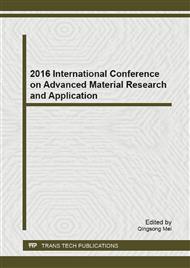p.3
p.8
p.14
p.19
p.23
p.31
p.37
p.47
p.53
Effect of Frequency on the Fatigue Behavior of IN718 Superalloy
Abstract:
IN718 alloy possesses excellent mechanical properties at high temperatures, good process ability, therefore, it has been widely used in aero engine turbine disks, compressor disks, and power turbine shafts (i.e., rotating components). The fatigue properties of the alloy are a key factor that determines the safety and reliability of the engine. In this paper, the fatigue properties of IN718 alloy are investigated under low-and middle-frequency conditions at 600 °C and 455 °C, the initiation of fatigue cracks, and the relation between fatigue life and grain size are discussed. The results show that the carbides response as a crack initiation site at low-frequency fatigue condition (1 Hz), and string-type or heap-type carbides distribution promotes crack propagation and shortens fatigue life, the twin boundaries in large grains are act as a crack initiation site at middle-frequency fatigue condition (10 Hz). The grain size is smaller, and the low cycle fatigue properties of the alloy are better.
Info:
Periodical:
Pages:
23-30
Citation:
Online since:
January 2017
Authors:
Keywords:
Price:
Сopyright:
© 2017 Trans Tech Publications Ltd. All Rights Reserved
Share:
Citation:



